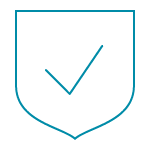
You can throw a lot of things into the mix trying to improve your practice.
Do you get techy and install cutting-edge equipment? Maybe you invest in training to improve company culture.
But there’s one under-the-radar, simple process adjustment that can increase operational efficiency, patient satisfaction, staff morale, and revenue generation all at once.
Have you optimized your patient scheduling?
A schedule that’s not optimized can throw a wrench in the works more than some may realize, so it’s crucial to tackle it head-on. Here are four tips for making the most of your scheduling — benefiting your patients and the practice.

1. Remember Why It Matters
Optimized scheduling improves the patient experience, which means more patient referrals and more positive online reviews.
Plus, optimized scheduling helps you:
- Improve company culture
- Maximize marketing dollars
- Be punctual with your patients
- Right-size the time needed with each patient
- Hire when it’s most efficient and beneficial to the practice
What are the potential downfalls of not optimizing your schedule?
- Increased patient wait times
- Poor communication with patients
- Mistakes in billing from feeling rushed
- Greater stress among patients, staff, and providers
- Decline in employee morale

2. Make It About Your Patients
Who are you putting first when creating your practice schedule — the patients, your team, or you?
With patient-centered scheduling, the appointment types fall in a different pattern. As a result, your providers aren’t rushed — they can take the time they need to help their patients.
A great way to get started is to see your scheduling process through the patient’s eyes. Take the time to walk through your practice’s process as a patient, getting a feel for wait times and rushed appointments.
This exercise will provide priceless perspective, and it will highlight gaps and opportunities for improvement.

3. Get the Big Picture
Optimizing your schedule calls for a closer look at your current circumstances to determine what’s possible.
For example, you need to know what comprises your current patient mix. But you also need to know the appropriate amount of time to allocate for each patient, both new patients and current, and for each appointment type.

4. Make It a Team Effort
Optimized scheduling only works if everyone’s on the same page.
Make sure the whole team is aware of the schedule change, agrees to the new schedule process, and understands how it will benefit everyone.
And before setting a go-live date, emphasize that this:
- Requires putting patients first
- Comes with a learning curve and may bring challenges
- Represents an investment in time and effort but will pay off for patients, the team, and the practice
By having an optimized, patient-centered schedule, you can significantly increase patient satisfaction while increasing your overall team morale.
How Can You Improve Your Schedule Right Now?
You will get actionable insights galore by simply pretending to be (or having someone you know pretend to be) a patient at your practice. Even just what you learn about patient wait times will be crucial.
Also, work toward identifying attrition points:
- When and why patients leave
- Whether all patient referrals are getting scheduled
- Whether you circled back with a referral’s physician
- How many patients are lost based on scheduling
- How many are lost based on wait time

Keys to Sticking to Your New Systems and Schedule
Get buy-in from the beginning
Don’t simply roll out a new schedule plan or system — get buy-in from team members and make sure they understand the patient and practice benefits.
Train the people involved
After buy-in, train the people who will be impacted. This might require separate training for each position (front-office staff, office manager, audiologist, etc.). Along with this, ensure the clinicians have what they need.
Conduct regular people and process audits
Practice needs change and employees come and go, so it’s critical that you don’t simply launch a new system and let it be.
Shadow and coach staff in key roles to ensure new processes and systems are being followed correctly. Review reports monthly and spot any issues with the new systems and adjust quarterly.
Taking ownership of your schedule doesn’t happen overnight, but small, consistent changes can have a big impact.